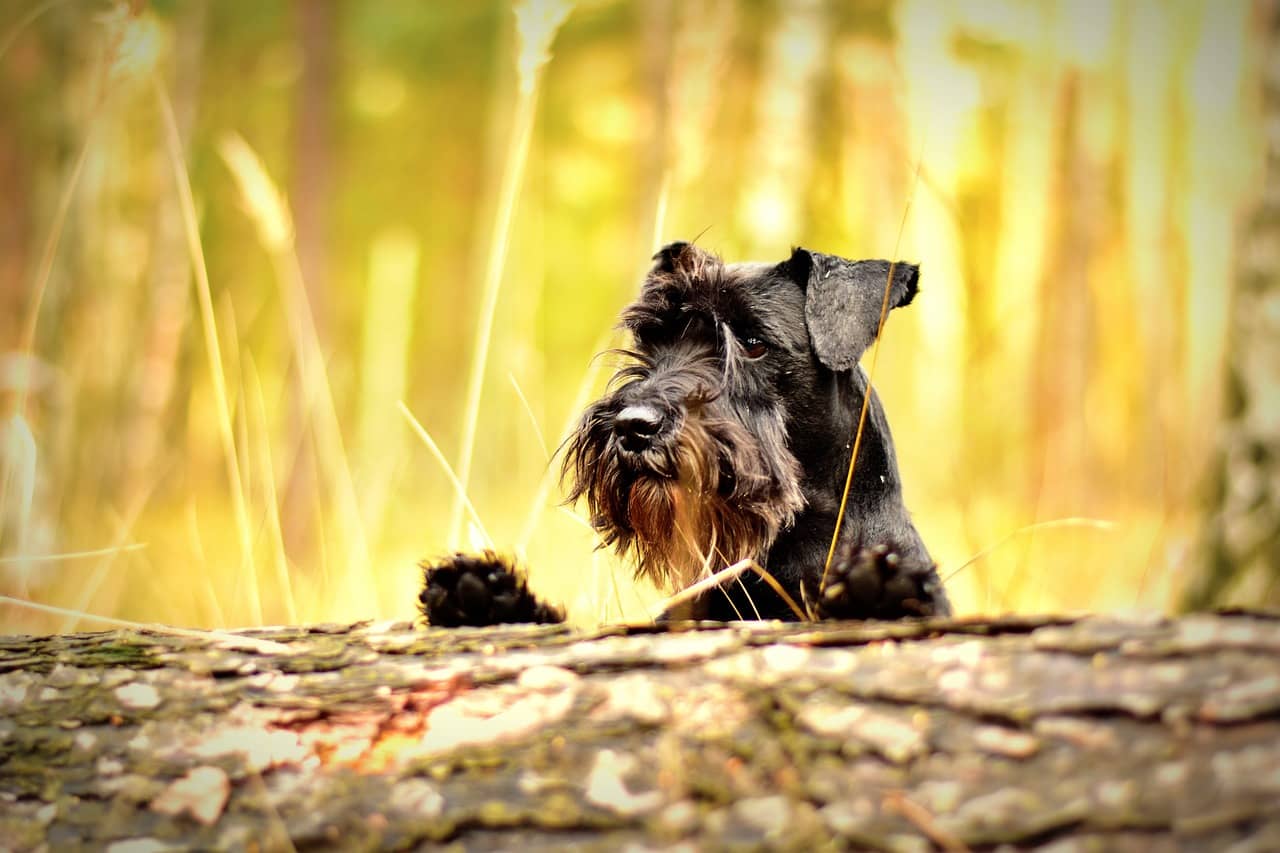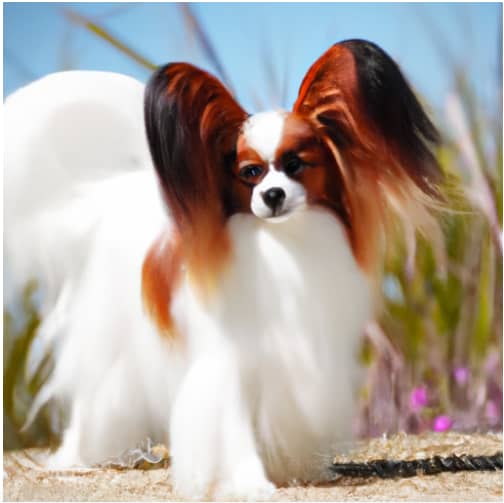Jack Russell Terrier Shedding: Why Do Jack Russell Terriers Shed?
Jack Russell Terriers Shed? If you’ve ever owned a Jack Russell Terrier, you probably know all too well about their shedding habits. But have you ever wondered why these adorable little dogs seem to leave a trail of fur wherever they go? In this article, we’ll explore the reasons behind the Jack Russell Terrier’s shedding tendencies, offering insights into their DNA, coat type, and other factors that contribute to their furry messes. Whether you’re a proud Jack Russell owner or simply curious about this breed, read on to discover the secrets behind their shedding and how you can manage it effectively.
Factors that contribute to Jack Russell Terrier shedding
Breed characteristics
One of the factors that contribute to Jack Russell Terrier shedding is their breed characteristics. Jack Russell Terriers have a double coat, consisting of a dense undercoat and a wiry topcoat. This combination of coats helps to protect them from harsh weather conditions and provide insulation. However, this also means that they are more prone to shedding.
Genetics
Genetics plays a role in Jack Russell Terrier shedding. The genes inherited from their parents can determine the type and amount of fur they have, and therefore, how much they shed. Some Jack Russell Terriers may have a higher tendency to shed due to their genetic makeup.
Seasonal shedding
Like many other dog breeds, Jack Russell Terriers also experience seasonal shedding. This is a natural process in which dogs shed their old and damaged fur to make way for new growth. During the shedding season, Jack Russell Terriers may shed more than usual, leaving their fur around the house.
Overall health
The overall health of a Jack Russell Terrier can also affect their shedding patterns. A dog that is healthy and well-nourished is more likely to have a healthy coat and shed less. On the other hand, if a Jack Russell Terrier is experiencing health issues or nutritional deficiencies, it can lead to excessive shedding.
Stress and anxiety
Stress and anxiety can contribute to shedding in Jack Russell Terriers. Just like humans, dogs can experience stress and anxiety, and this can manifest in various ways, including excessive shedding. Common stressors for Jack Russell Terriers include changes in routine, loud noises, separation anxiety, or even meeting new people or animals.
Understanding the Jack Russell Terrier breed
Origins and history
Jack Russell Terriers were originally bred in the early 19th century by Reverend John Russell, a hunting enthusiast in England. He aimed to create a small and agile terrier that could effectively hunt foxes and other small game. These dogs were then named after him. The breed’s hunting instincts and tenacity can still be seen in their energetic nature today.
Physical characteristics
Jack Russell Terriers are small dogs with a sturdy and compact build. They have a balanced and athletic body, designed to help them navigate various terrains during hunting. These terriers have a distinctive head shape with almond-shaped eyes and V-shaped ears that fold forward. Their tail is typically docked, and their chest is deep and muscular.
Coat types and shedding
Jack Russell Terriers can have either a smooth coat or a rough coat. The smooth coat is shorter and sleeker, while the rough coat is denser and wiry. Both coat types shed, although the rough coat may shed slightly more due to its texture. Regular grooming and proper maintenance can help manage the shedding and keep the coat healthy.
Temperament and energy levels
Jack Russell Terriers are known for their lively and spirited temperament. They are highly intelligent, energetic, and eager to please. These qualities make them excellent working dogs and companions, but their high energy levels can also contribute to shedding. Regular exercise and mental stimulation can help keep them content and potentially reduce excessive shedding.
Genetics and shedding in Jack Russell Terriers
Inherited traits
Jack Russell Terriers inherit certain traits from their parents, including their shedding tendencies. It is essential to consider the lineage and breeding history when getting a Jack Russell Terrier puppy. Responsible breeders carefully select breeding pairs to minimize any undesirable traits, including excessive shedding.
Genetic factors affecting shedding
Several genetic factors come into play when it comes to shedding in Jack Russell Terriers. The type and texture of their coat, as well as the density of their undercoat, can influence shedding patterns. Additionally, the genetic predisposition to skin conditions or allergies can also affect the health of their coat and contribute to shedding.
Breeders’ role in shedding tendencies
Responsible breeders play a crucial role in managing shedding tendencies in Jack Russell Terriers. They carefully select breeding pairs based on traits such as coat type, texture, and overall health. By being proactive in their breeding practices, breeders can help produce Jack Russell Terriers with healthier coats and lower shedding tendencies.
Seasonal shedding in Jack Russell Terriers
Adapting to changing seasons
Jack Russell Terriers, like many other dog breeds, undergo seasonal shedding. As the seasons change, their coat has to adapt accordingly. During the warmer months, they may shed their dense winter undercoat to allow for a lighter and cooler coat. Similarly, in the colder months, they grow a thicker undercoat to provide insulation against the cold.
Why dogs shed more in certain seasons
Dogs shed more in certain seasons due to the natural process of hair growth and loss. In anticipation of warmer weather, dogs shed their thicker winter coat to allow for a lighter and more comfortable coat. Similarly, as the temperature drops, they grow a thicker undercoat to provide better insulation. This shedding and regrowth process can vary in intensity depending on the breed and individual dog.
Managing seasonal shedding
Although seasonal shedding is a normal part of a dog’s life, there are ways to manage it. Regular grooming, including brushing and combing, can help remove loose hair and prevent it from ending up on furniture and clothes. A healthy diet, rich in essential nutrients, can also support a healthy coat and minimize excessive shedding. If shedding becomes excessive or abnormal, it may be worth consulting a veterinarian to rule out any underlying health issues.

Overall health and its impact on shedding
Role of nutrition in coat health
A well-balanced diet plays a significant role in maintaining a Jack Russell Terrier’s overall health, including the quality of their coat. Essential nutrients, such as omega-3 fatty acids, vitamins, and minerals, contribute to a healthy and shiny coat. Feeding a high-quality dog food that meets their nutritional needs can help minimize shedding and promote a healthy coat.
Common health issues affecting shedding
Certain health issues can contribute to excessive shedding in Jack Russell Terriers. Allergies, skin infections, hormonal imbalances, and nutritional deficiencies can affect the health of their coat and lead to increased shedding. Regular veterinary check-ups and prompt treatment of any health issues can help manage shedding problems.
Grooming practices for a healthy coat
Regular grooming is essential for maintaining a healthy coat and managing shedding. Jack Russell Terriers benefit from regular brushing and combing to remove loose hair and prevent matting. The frequency of grooming can vary depending on the coat type, with rough-coated Jack Russell Terriers requiring more attention. Additionally, trimming their nails, cleaning their ears, and brushing their teeth are also important aspects of overall grooming.
Stress and anxiety as contributors to shedding
Effects of stress on a dog’s coat
Stress can have a significant impact on a dog’s coat, including shedding. When a dog experiences stress or anxiety, it can disrupt their normal grooming habits, leading to excessive shedding. Stress can also affect the health of their skin, making it more prone to dryness, irritation, and increased shedding. Creating a calm and safe environment for a Jack Russell Terrier can help reduce stress and minimize shedding.
Identifying stressors in a Jack Russell Terrier’s life
It is important to identify potential stressors in a Jack Russell Terrier’s life to address any shedding issues. Common stressors for these energetic terriers can include changes in routine, loud noises, separation anxiety, or even unfamiliar people or animals. By understanding and addressing these stressors, the aim is to create a more relaxed and stress-free environment.
Reducing stress and managing shedding
To reduce stress and manage shedding, it is crucial to provide a stable and supportive environment for a Jack Russell Terrier. This can include sticking to a consistent routine, providing mental and physical stimulation, and creating a safe space for them to retreat to when they feel overwhelmed. If necessary, consulting with a professional dog trainer or behaviorist can be beneficial in managing stress and reducing excessive shedding.
Grooming tips for managing Jack Russell Terrier shedding
Regular brushing and combing
Regular brushing and combing are essential grooming practices for managing shedding in Jack Russell Terriers. Use a brush or comb suitable for their coat type to remove any loose and dead hair. This not only helps to control shedding but also keeps their coat healthy and tangle-free. Aim to brush them at least once a week, or more frequently for rough-coated Jack Russell Terriers.
Bathing frequency and appropriate products
Bathe your Jack Russell Terrier as needed to keep their coat clean and healthy. However, excessive bathing can strip their coat of essential oils, leading to dryness and increased shedding. It is important to use mild and dog-friendly shampoos specifically formulated for their coat type. Consult with a veterinarian or professional groomer to determine the appropriate bathing frequency and products for your specific Jack Russell Terrier.
Trimming and maintaining the coat
Regular trimming and maintenance of your Jack Russell Terrier’s coat can help manage shedding. For rough-coated Jack Russell Terriers, periodic hand-stripping may be necessary to remove dead fur and promote healthy coat growth. Smooth-coated Jack Russell Terriers may require occasional trimming to maintain a neat appearance. Professional groomers can provide expert advice and assistance in maintaining your dog’s coat.
Dealing with excessive shedding
If your Jack Russell Terrier’s shedding seems excessive or abnormal, it is advisable to consult with a veterinarian. Excessive shedding can sometimes be a sign of an underlying health issue. The veterinarian can perform a thorough examination, including blood tests, to check for any underlying conditions or nutritional deficiencies. They can then recommend appropriate treatments or dietary changes to help manage the shedding.
Diet and nutrition for a healthy coat
Essential nutrients for a healthy coat
To maintain a healthy coat, Jack Russell Terriers require certain essential nutrients in their diet. Omega-3 fatty acids, such as those found in fish oil, can promote a healthy coat and reduce shedding. Additionally, vitamins A, E, and Biotin also play a role in maintaining the health of their skin and coat. A balanced and high-quality dog food should provide these essential nutrients, but consult with a veterinarian for specific dietary recommendations.
Choosing the right dog food
When selecting a dog food for your Jack Russell Terrier, consider their age, activity level, and specific dietary needs. Look for a high-quality dog food that lists real meat as the main ingredient and avoids artificial additives and fillers. Dog foods formulated for skin and coat health can also be beneficial in reducing shedding. It is always best to consult with a veterinarian for personalized dietary recommendations.
Supplements for skin and coat health
Supplements can support a healthy coat in Jack Russell Terriers. Omega-3 fatty acid supplements, such as fish oil capsules, can provide additional support for a shiny and healthy coat. Other supplements, such as biotin or vitamin E, may also be recommended by a veterinarian to address specific skin and coat issues. Remember to consult with a veterinarian before starting any new supplements to ensure they are appropriate for your dog.
Environmental factors and their influence on shedding
Indoor vs. outdoor living
The environment in which a Jack Russell Terrier lives can influence shedding. Dogs kept primarily indoors may shed more consistently throughout the year due to the controlled temperature and light exposure. On the other hand, those living primarily outdoors may experience more pronounced seasonal shedding as their coat adjusts to changing temperatures and daylight hours.
Pollens and allergies
Just like humans, Jack Russell Terriers can be allergic to various environmental factors, including pollen. Allergies can contribute to skin irritation, itching, and increased shedding. If you notice excessive scratching or licking, redness, or hair loss, it is worth consulting a veterinarian to determine if allergies are a contributing factor. Allergy testing and appropriate management can help reduce shedding caused by allergies.
Reducing environmental triggers
To minimize shedding caused by environmental triggers, it is important to identify and reduce exposure to these triggers. This can include keeping a clean and dust-free living environment, using hypoallergenic bedding materials, and avoiding exposure to known allergens. Regular grooming and frequent vacuuming can help remove allergens from your home and reduce shedding caused by allergies.
Visiting the vet to manage shedding
When to consult a veterinarian
If you have concerns about your Jack Russell Terrier’s shedding, it is recommended to consult with a veterinarian. They can evaluate your dog’s overall health, assess their coat condition, and determine if there are any underlying health issues contributing to excessive shedding. Regular veterinary check-ups are also essential for monitoring your dog’s health and addressing any concerns.
Medical conditions related to excessive shedding
Excessive shedding can sometimes be a sign of an underlying medical condition. Medical conditions such as thyroid disorders, hormonal imbalances, allergies, or skin infections can contribute to abnormal shedding patterns. A veterinarian can perform diagnostic tests to identify and treat any underlying health issues contributing to excessive shedding.
Vet-recommended treatments and resources
If your Jack Russell Terrier’s shedding requires medical intervention, a veterinarian can provide appropriate treatments and resources. This can include medications to address specific health conditions, dietary recommendations, special shampoos or conditioners, or referrals to veterinary dermatologists or professional groomers. Regular communication with your veterinarian is key to managing shedding effectively.
In conclusion, shedding is a natural process for Jack Russell Terriers, influenced by various factors such as breed characteristics, genetics, seasons, overall health, and stress. By understanding these factors and implementing appropriate grooming practices, nutrition, and environmental management, you can help minimize shedding and keep your Jack Russell Terrier’s coat healthy and shiny. Remember to consult with a veterinarian for personalized advice and guidance tailored to your individual dog.















